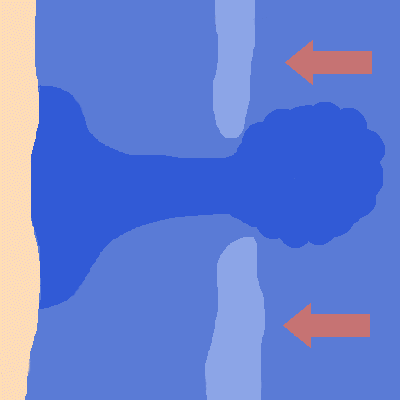Watch this video to learn how to avoid rip currents.
Outgoing ocean currents – aka rip currents, but commonly called rip tides – are a serious danger for ocean beaches. Indeed, more than 80% of rescues performed by surf beach lifeguards are due to rip tides. Also, the speed at which the water flows away from the beach varies. An average flow rate is one to two feet per second (1/2 meter per second), but they can flow as fast as eight feet per second. That’s faster than an Olympic swimmer can swim! Learn what to do if you get caught in a rip current by watching the NOAA video above, and share with your kids.
How to avoid rip currents
The first step is to avoid a rip current altogether is to know if it’s safe to go in the water. Check what the conditions are at the beach the day you visit. Also, be aware of what a rip current looks like. Look for signs of rip currents, including:
- breaks in the waves
- foam, seaweed or debris being carried out to sea
- a difference in the color of the water
- a channel and churning seas
However, if you get caught in a rip current:
- Stay calm and don’t fight the current
- Swim parallel to the beach until you are out of the current
- Then swim at an angle back toward the shore
And, if you can’t swim out of the current, float or tread water and wait for the current to fade. Face the shore, wave your arms and call for help.
Likewise, if you see someone caught in a rip current, don’t try to save them yourself. Alert a lifeguard or call 911. If possible, throw a flotation device to them.
Learn more about rip currents from NOAA.
Rip, rip current or rip tide?
By the way, you’ll often hear rip currents called simply a rip, or you might hear them called by the misnomer rip tide. They really have nothing to do with tides.

Bottom line: Before going to the ocean this year, you’ll want to know how to avoid rip currents. Watch a video here to learn how to save yourself from these deadly currents.











